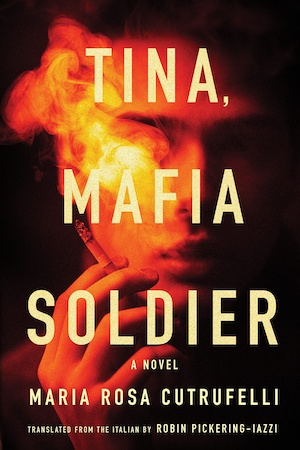Translated by Robin Pickering-Iazzi — Fact and fiction fuse in feminist Italian author Maria Rosa Cutrufelli’s first novel, Tina, Mafia Soldier, which is also the author’s first to be translated into English.
Originally published in 1994, Tina Cannizzaro’s story was inspired by that of Emanuela Azzarelli, a young woman who became the leader of a male teenage gang in the Sicilian town of Gela. Cutrufelli chronicles the events that shaped Tina’s life and set her on an irreversible path of crime and, ultimately, self-destruction against the backdrop of 1990s Sicily.
Intrigued by an article published about Tina’s criminal activities, our narrator, a teacher and writer, returns to her native Sicily to piece together the real story of masculiddas, or ‘the tomboy’. Tina’s ambition to become the head of her the Cosa Nostra gang begins when she witnesses her father being gunned down in the family’s brand new apartment. Without hesitation the eight-year-old retrieves a gun from the bottom of the bedroom closet and resolves to take over her father’s role in the mafia. At 14, Tina is the head of a gang of young boys, working for the Cosa Nostra gang.
Understanding Tina’s rise as a criminal is impossible without first understanding the world in which she grew up, and Cutrufelli excels at transporting her readers to Sicily during this turbulent period. At times, Gela, a town on the island’s western coast, threatens to overshadow the book’s main character.
Gela grew to become a mafia stronghold in the 1960s with the expansion of the oil industry around the town. This created jobs and wealth, as well as conditions in which organised crime thrives – property speculation, construction and government contracts. By the 1990s, Gela was a mafia-controlled wasteland, consumed by corruption and violence. It had the highest number of murders in Italy, with unprecedented brutality, gunfights, bombings and children and civilians were killed in the process. More than 100 people were killed in mafia-related incidents in Gela between 1987 and 1990.
When our narrator returns to Gela in the early 1990s, the city is unrecognisable to her. It no longer feels like home, and she is no longer accepted as Sicilian, but is regarded as an outsider who has abandoned her heritage. Winning the trust of locals, including Tina’s friends, family and acquaintances in order to conduct interviews proves difficult. Even her cousin treats her as if she as a stranger who doesn’t understand how things work in Sicily. Her interviews and journalistic investigation paint a picture of a society firmly entrenched in a traditional, patriarchal past.
In contrast, Tina’s a young girl who drives like a maniac, dresses like a man and wants to make her own mark in a society hostile towards women – even more so within the male-dominated mafia hierarchy. Tina is difficult to pin down. On the one hand, she is astute in dealing with the media, never revealing too much about herself. On the other, she enjoys the attention but risks losing her own identity.
Tina’s short life is traced by the narrator through newspaper articles, notes, interviews and visits to her childhood haunts. She wants to understand Tina, but she also hopes to interview the notorious mafia member. Yet, Tina remains elusive. Neither the narrator nor the reader really get to know her.
Maria Rosa Cutrufelli was born in Sicily but moved away, returning to Gela in the 1970s. She was suddenly engulfed by the patriarchal, more traditional culture of the south – a completely different environment to northern Italy. Prior to writing fiction, she was a successful journalist researching the socio-economic conditions of workers and particularly women. Her return to Gela prompted her to become involved in the feminist movement. Cutrufelli’s own story and outlook are evident in Tina, Mafia Soldier.
Don’t expect suspense, action or a complex storyline from Tina, Mafia Soldier. Sometimes it reads more like a work of non-fiction due to a lack of momentum and a thinly spread plot. Instead, this is a slow-paced exploration and detailed depiction of Sicilian culture and society illustrated via the unconventional story of a young woman who rebelled against this exact male-dominated culture.
For more Italian crime with true crime roots try the Italian crime show The Hunter.
Soho Press
Print/Kindle
£17.51
CFL Rating: 3 Stars
